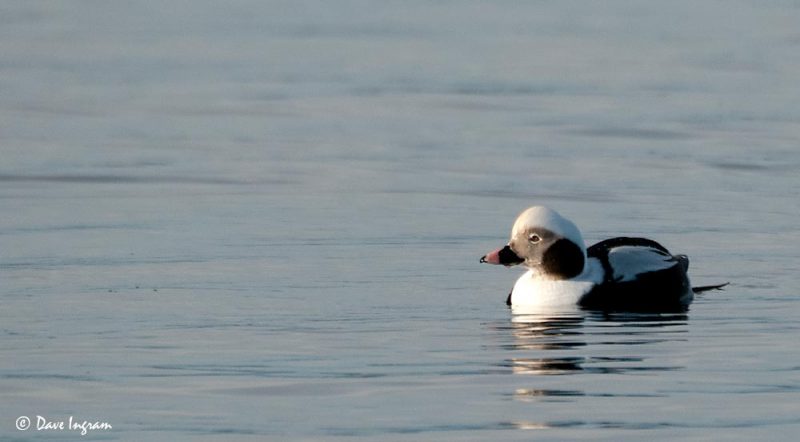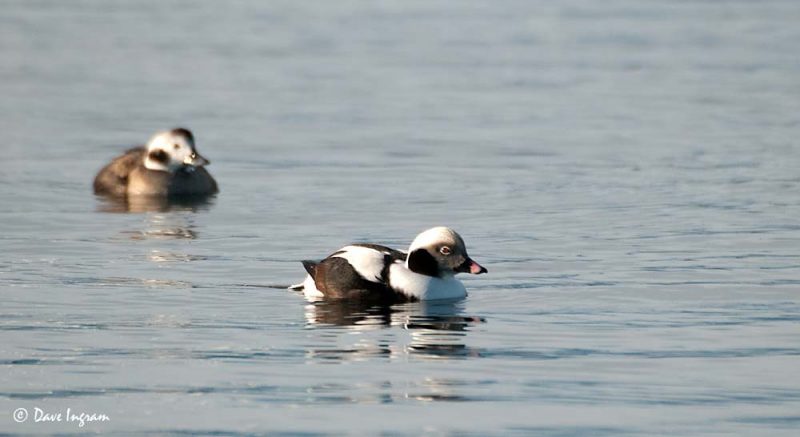During a break in the weather this week I had a chance to get down to Goose Spit to look for a short-eared owl that had been reported near the tip of the spit. There’s a large grassy area at the end of the spit that was once a hideous thicket of Scotch Broom. The Department of National Defense has removed the broom and has taken an active role in restoring the sensitive dune and grass habitat on the spit. It makes for good owl habitat and at this time of the year both Short-eared Owl and occasionally Snowy Owl have been seen here.
I got an unsatisfactory glimpse of the short-eared owl when I flushed it from a hump of grass and bramble in the middle of the thick grass. Fortunately, it was then that I heard the melodious call of the long-tailed duck (Clangula hyemalis), one of my favourite sounding (and looking) ducks. The scientific name is derived appropriately from the Latin clangere (to resound) and hiemalis (wintry).
Sibley describes the sound as a clear baying yodel “upup OW OweLEP” which I think does fair justice to the call. A Sea Duck Joint Venture long-tailed duck fact sheet describes the call as “ow ow owoolett” which is perhaps closer to what I hear. Regardless, once you’ve heard it you’ll never forget it.

At the tip of the sandy spit, a small flock of long-taileds were feeding quite close to the shore. I sat in the late afternoon sun and watched them for a while, enjoying both the heat and the auditory experience.

Long-tailed ducks are a gorgeous sea duck. The winter males are a striking combination of white, black, and gray. The long tail, which is the source of the new, politically correct common name, is distinctive. The male also has a two toned bill with a black base and a wide, pinkish band. The females are less dramatic but are beautiful nonetheless – a more subdued combination of brown, white, black and gray. They lack the long tail of the male.
Goose Spit is an excellent place to see Long-tailed Ducks and other sea ducks at this time of year. They’ll be making their way northward to breeding grounds on the Arctic tundra in early spring but until they do I’ll continue to look, and listen, for this fabulous winter sea duck!
Where to see Long-tailed Ducks:
Use the Google map below to get to Goose Spit, Comox, BC.
Comox, BC